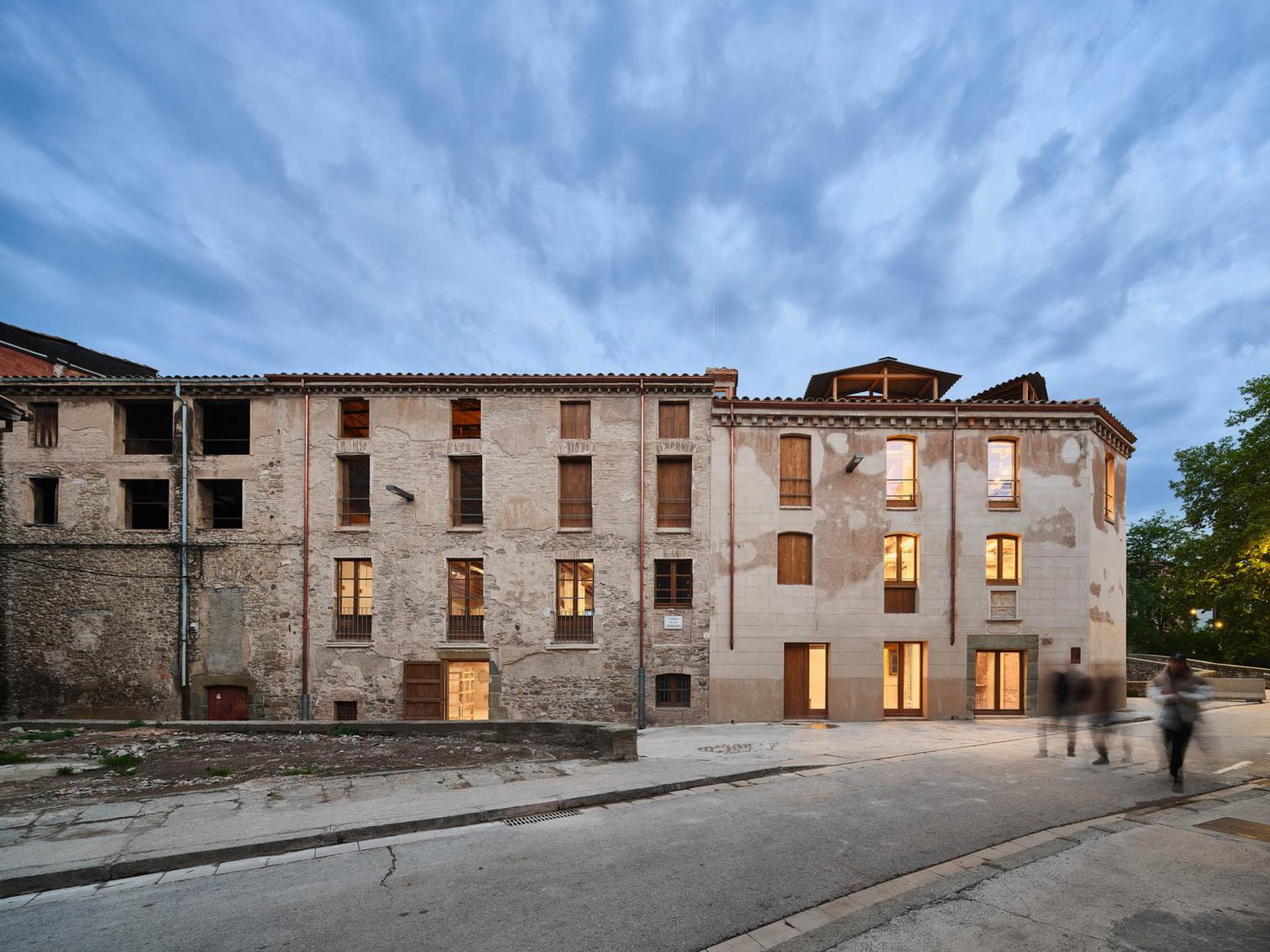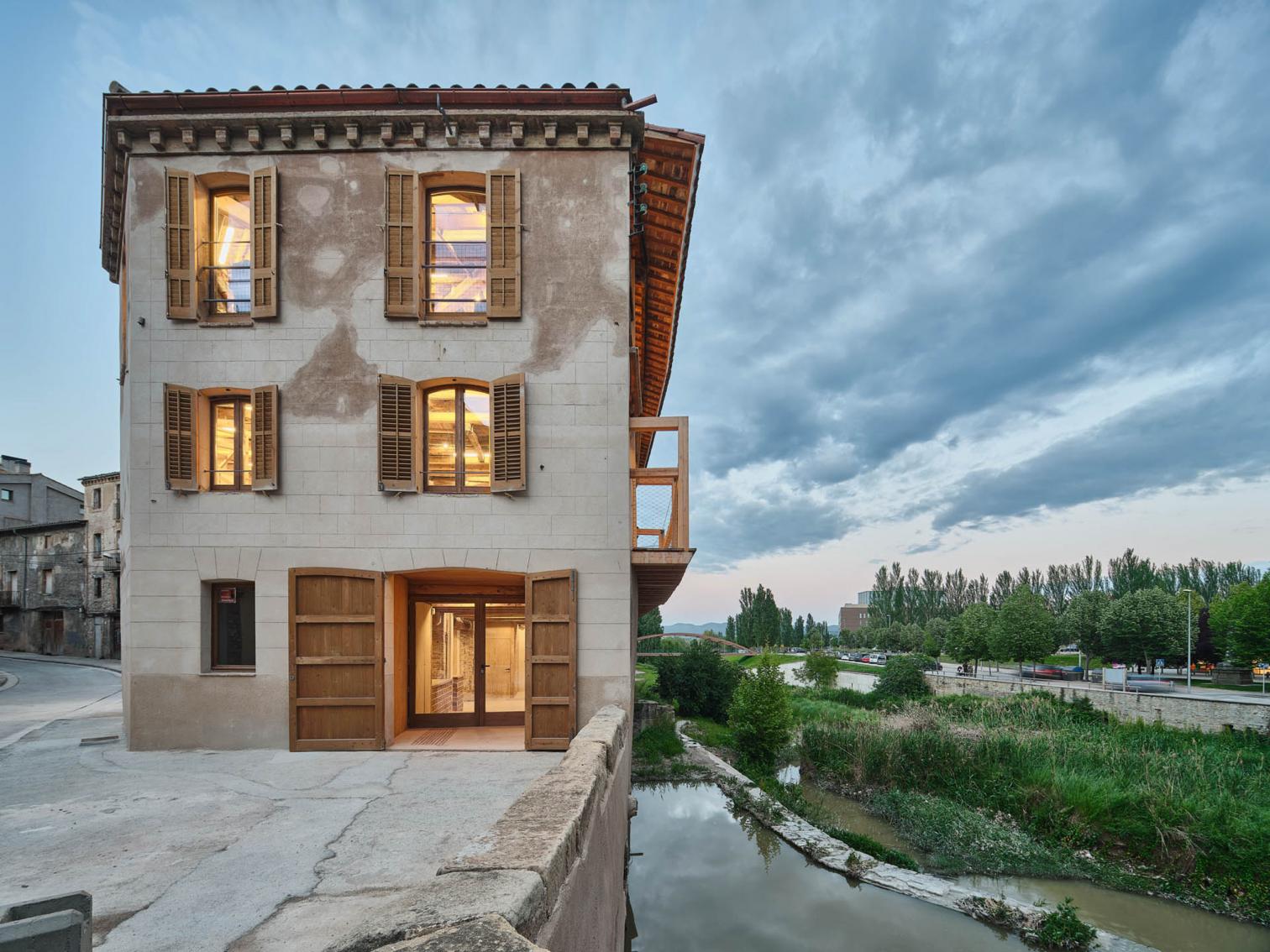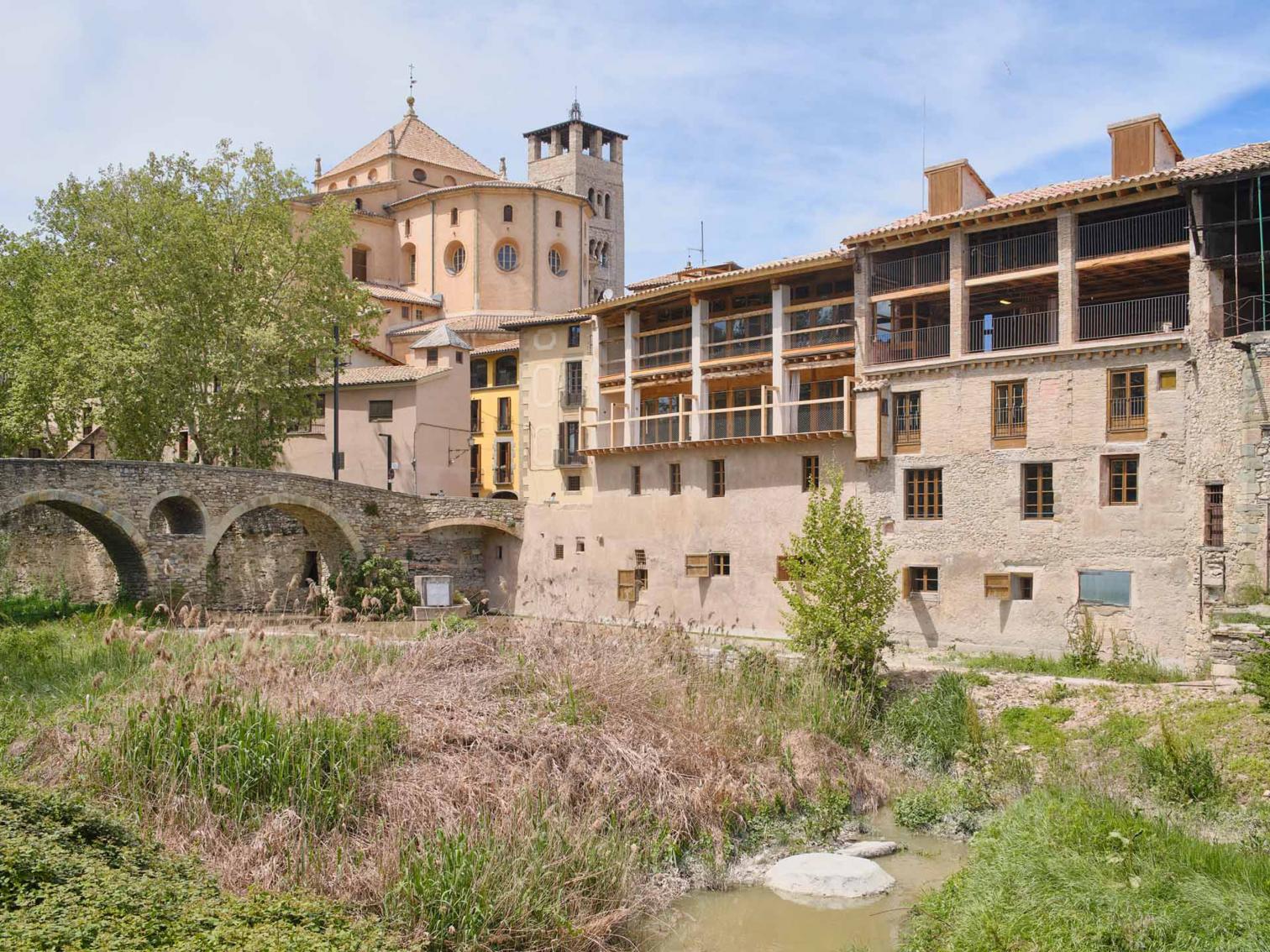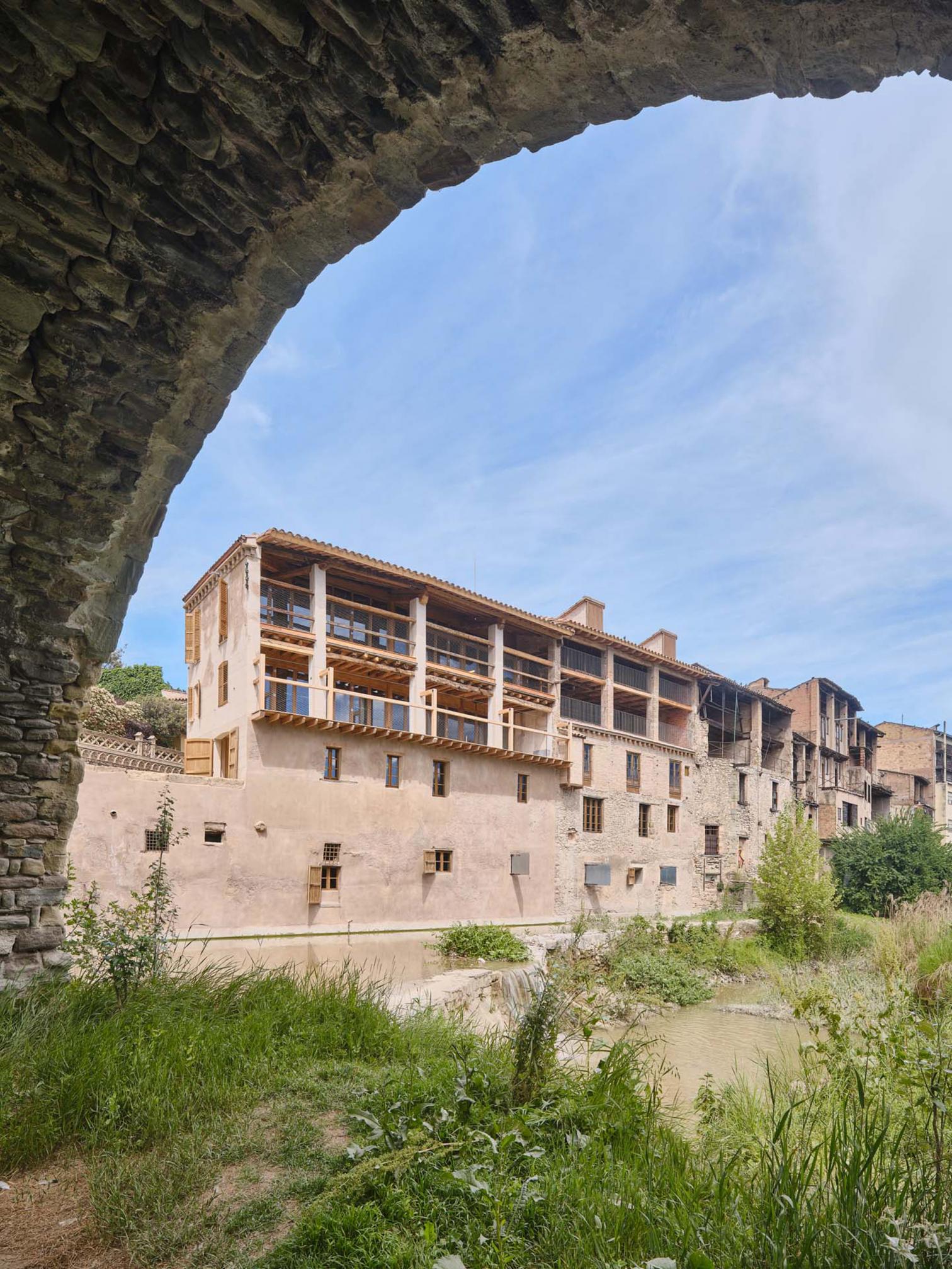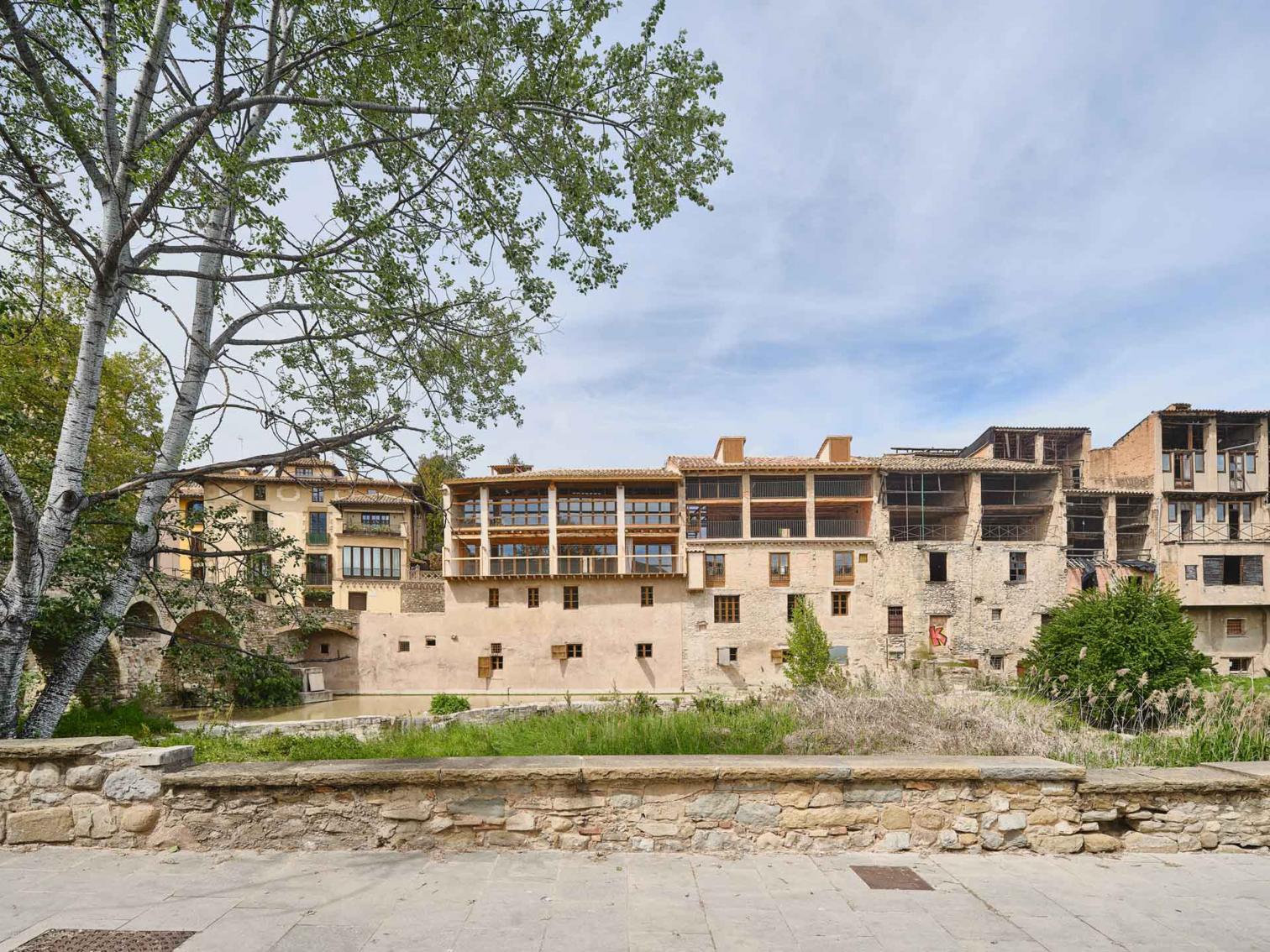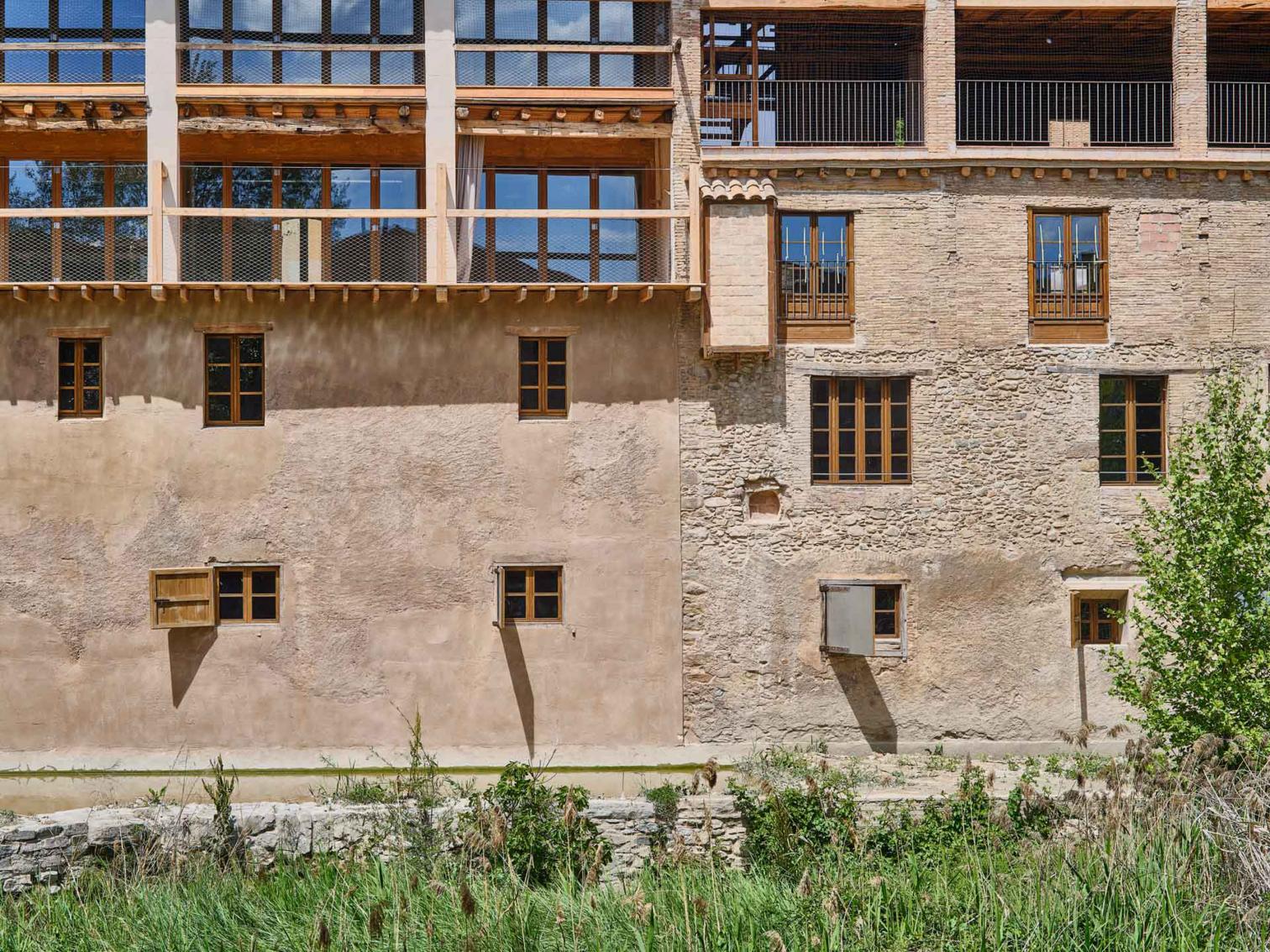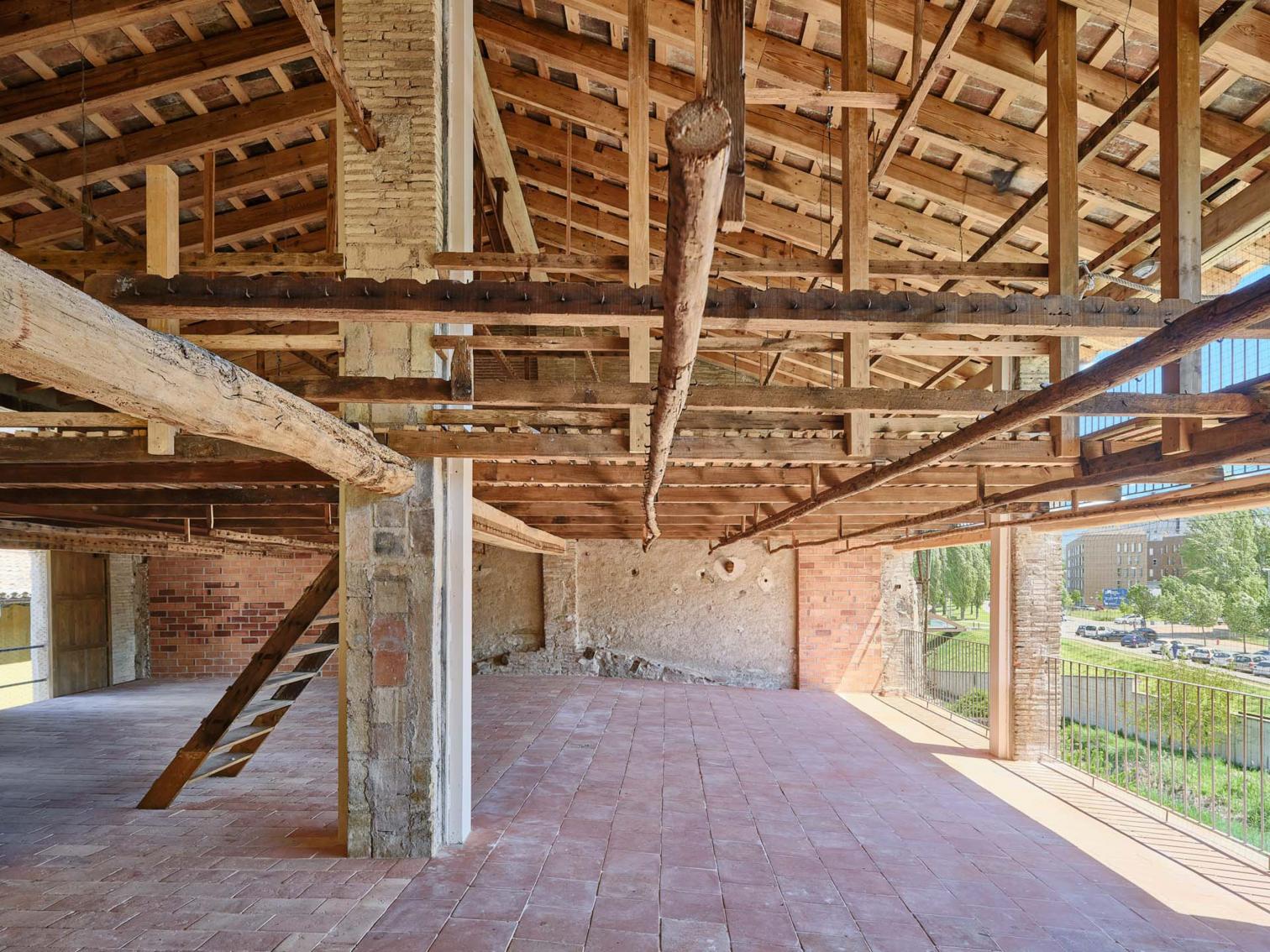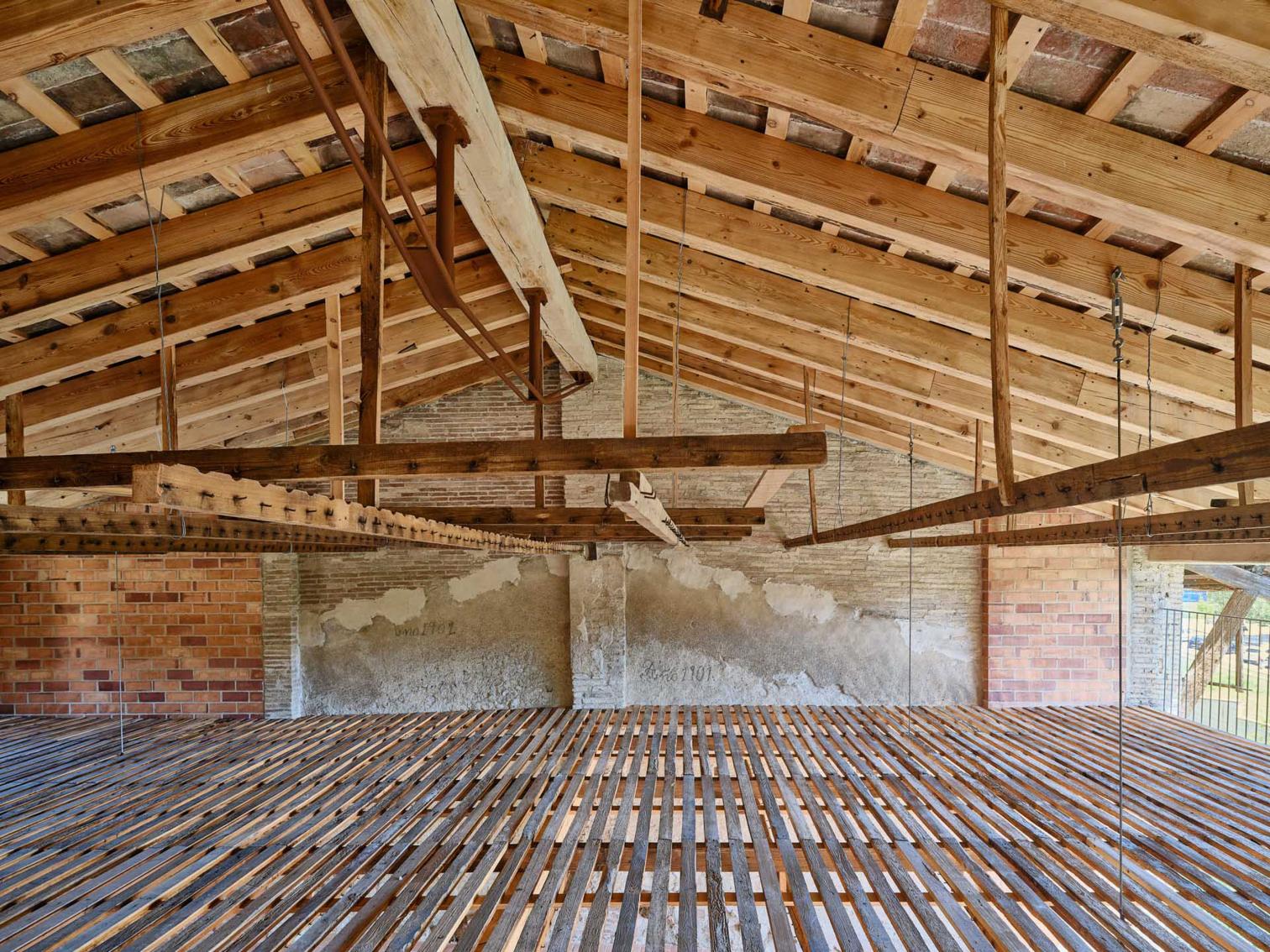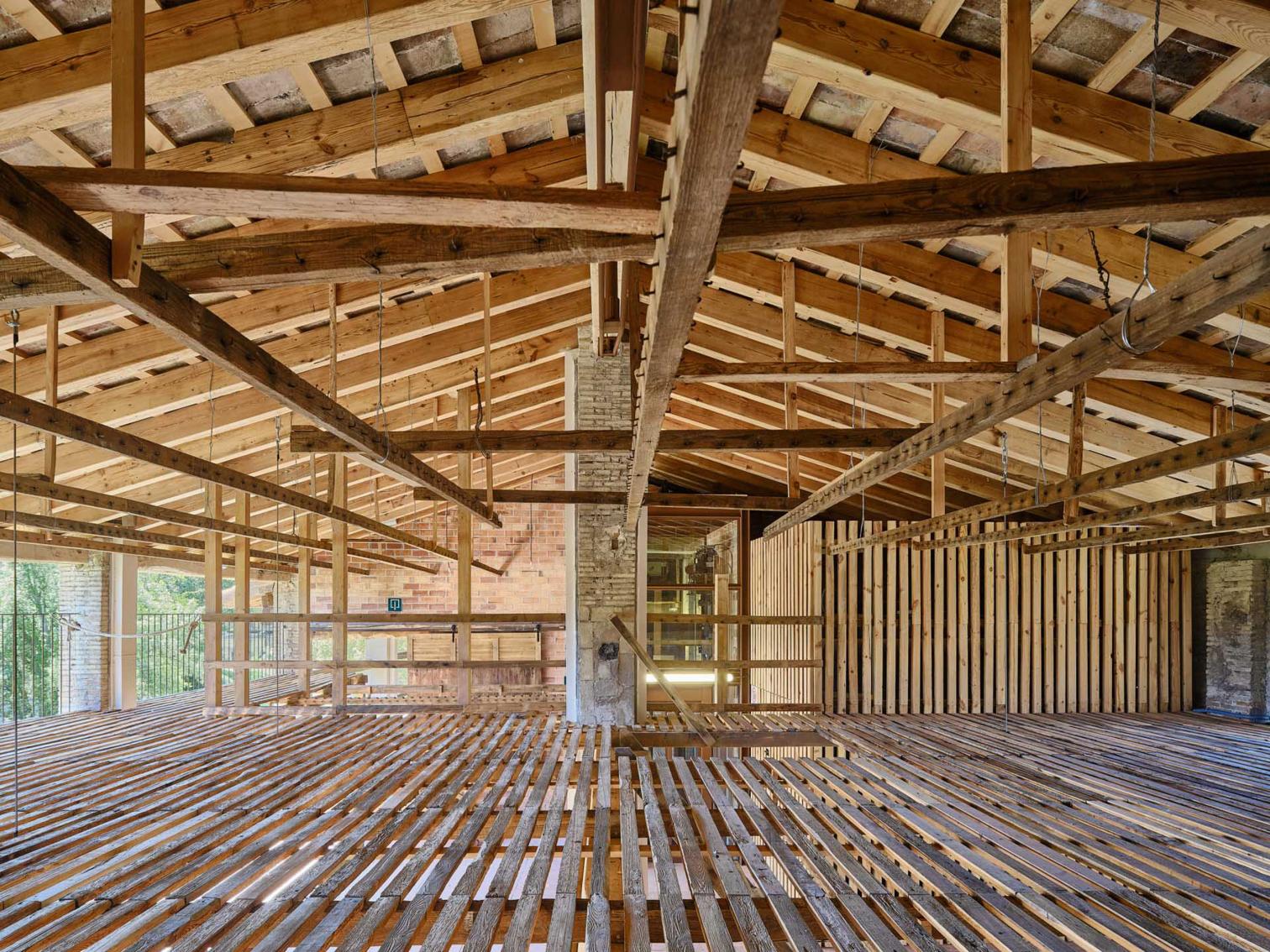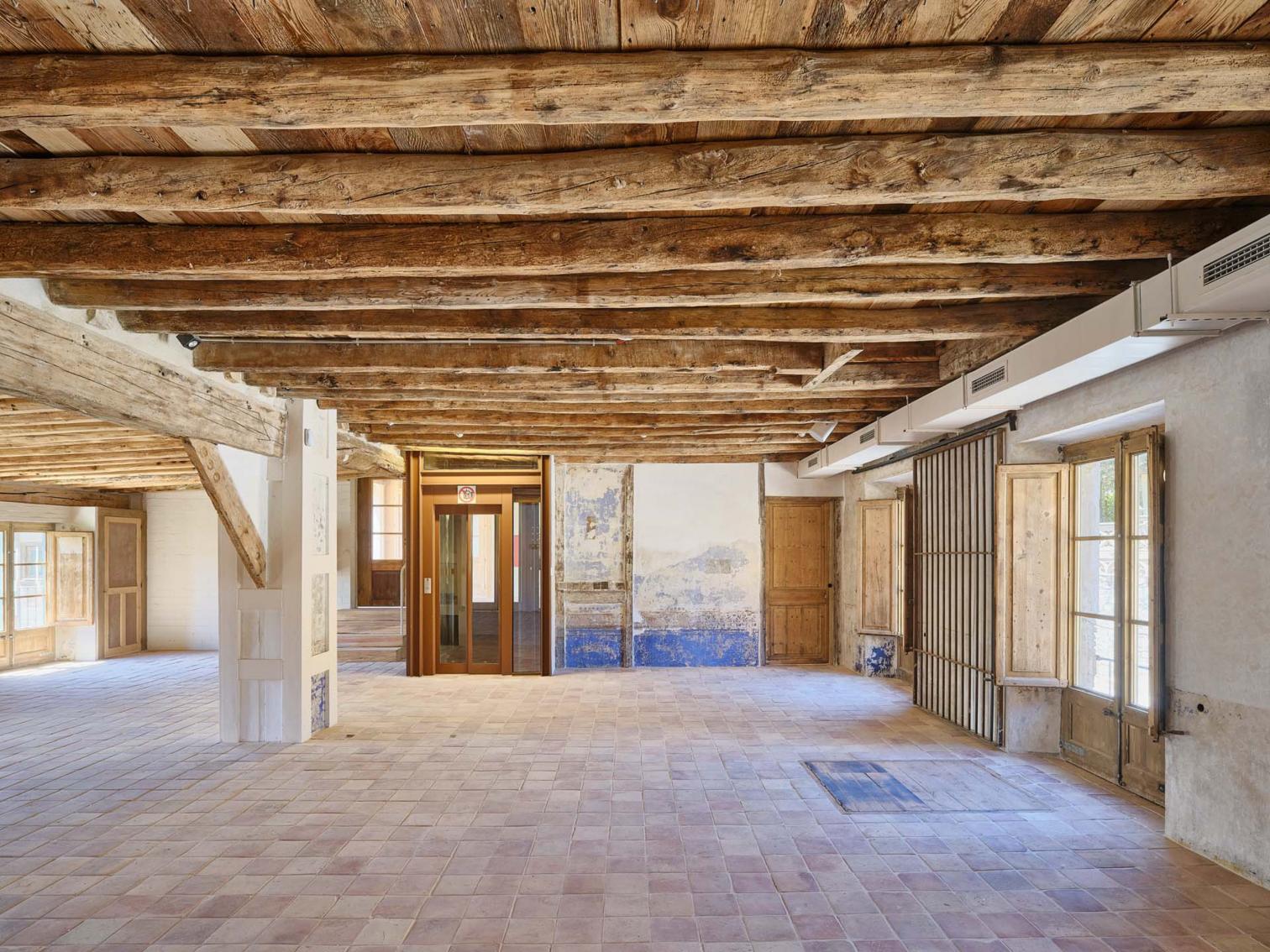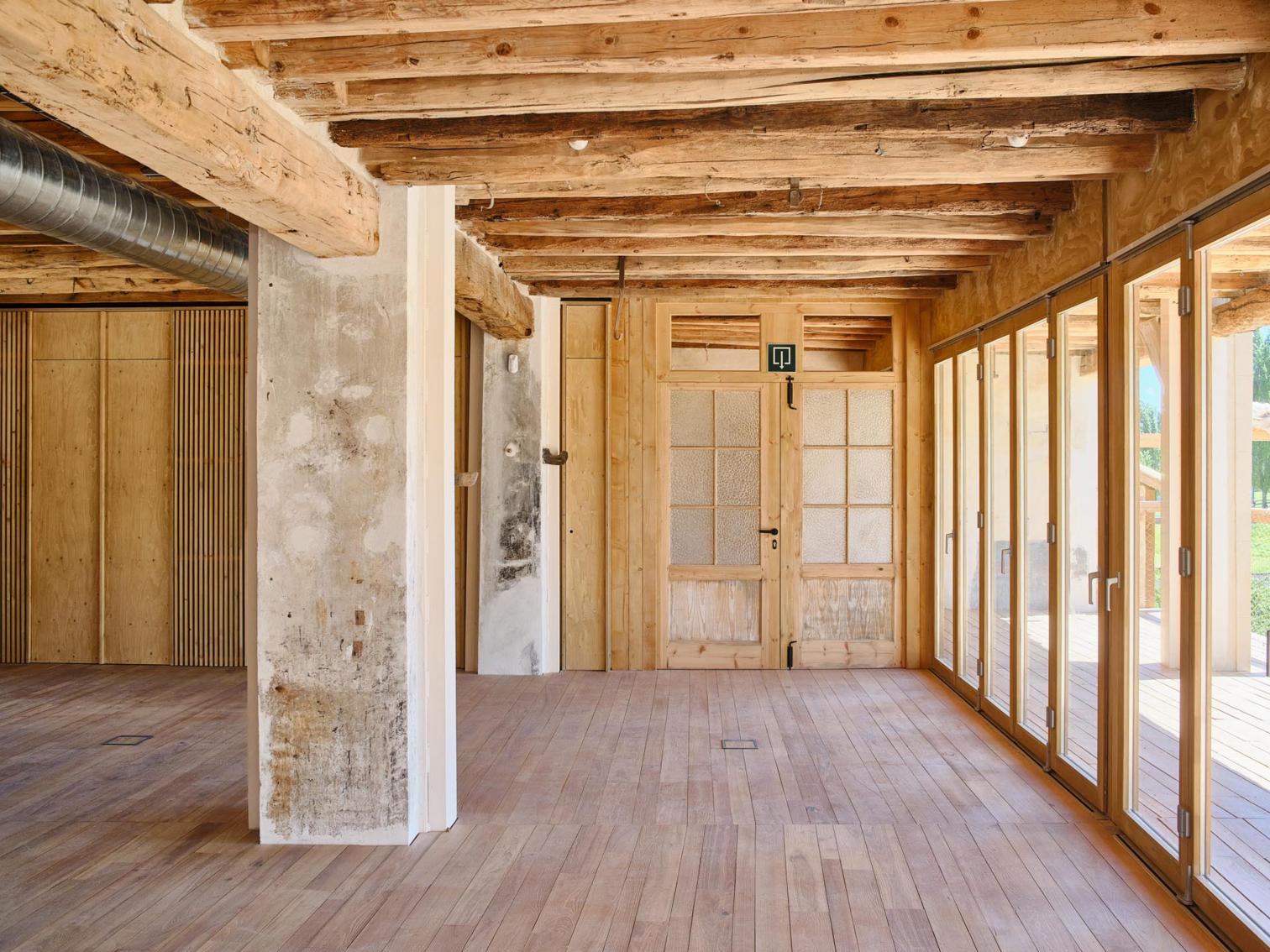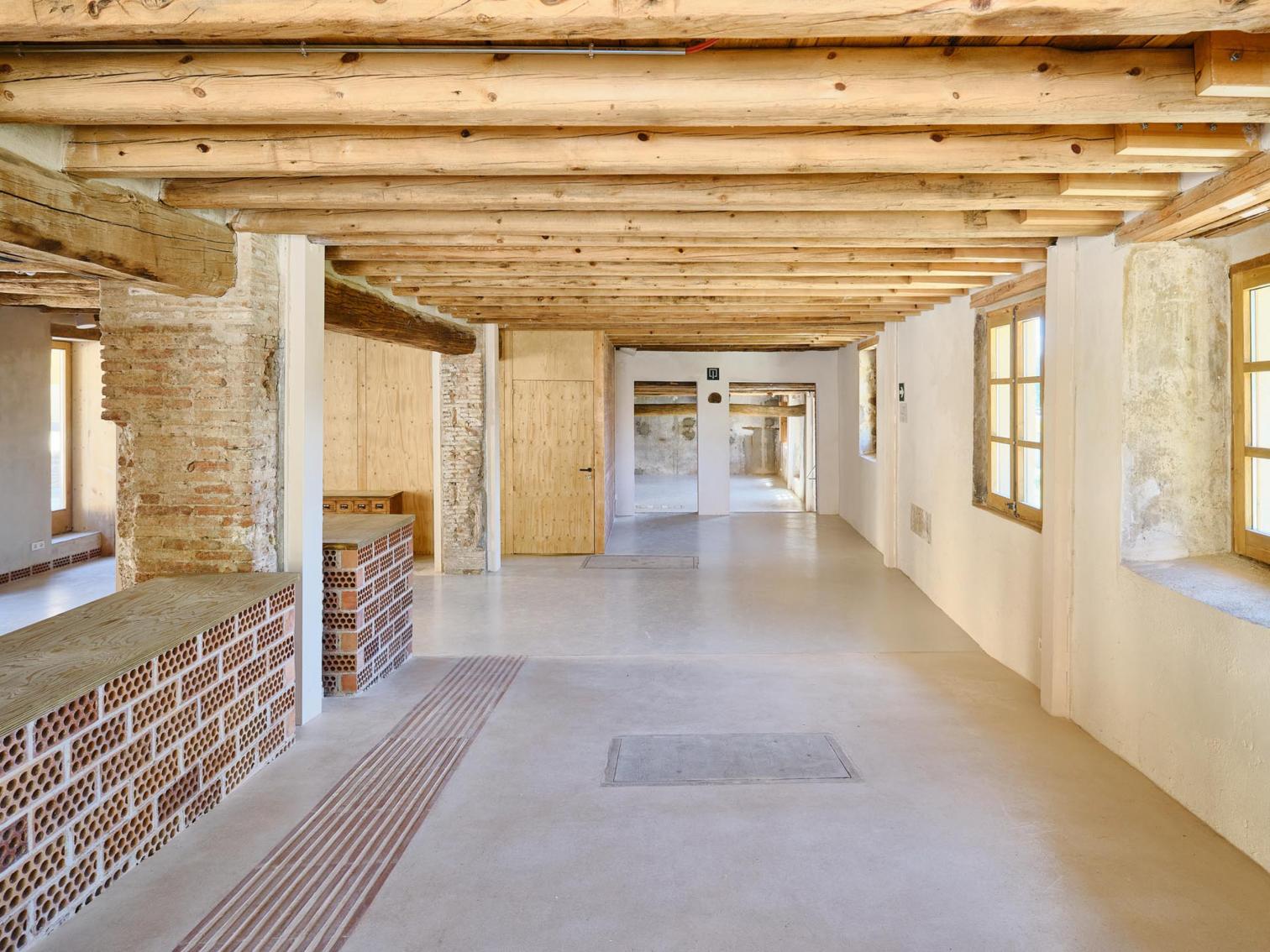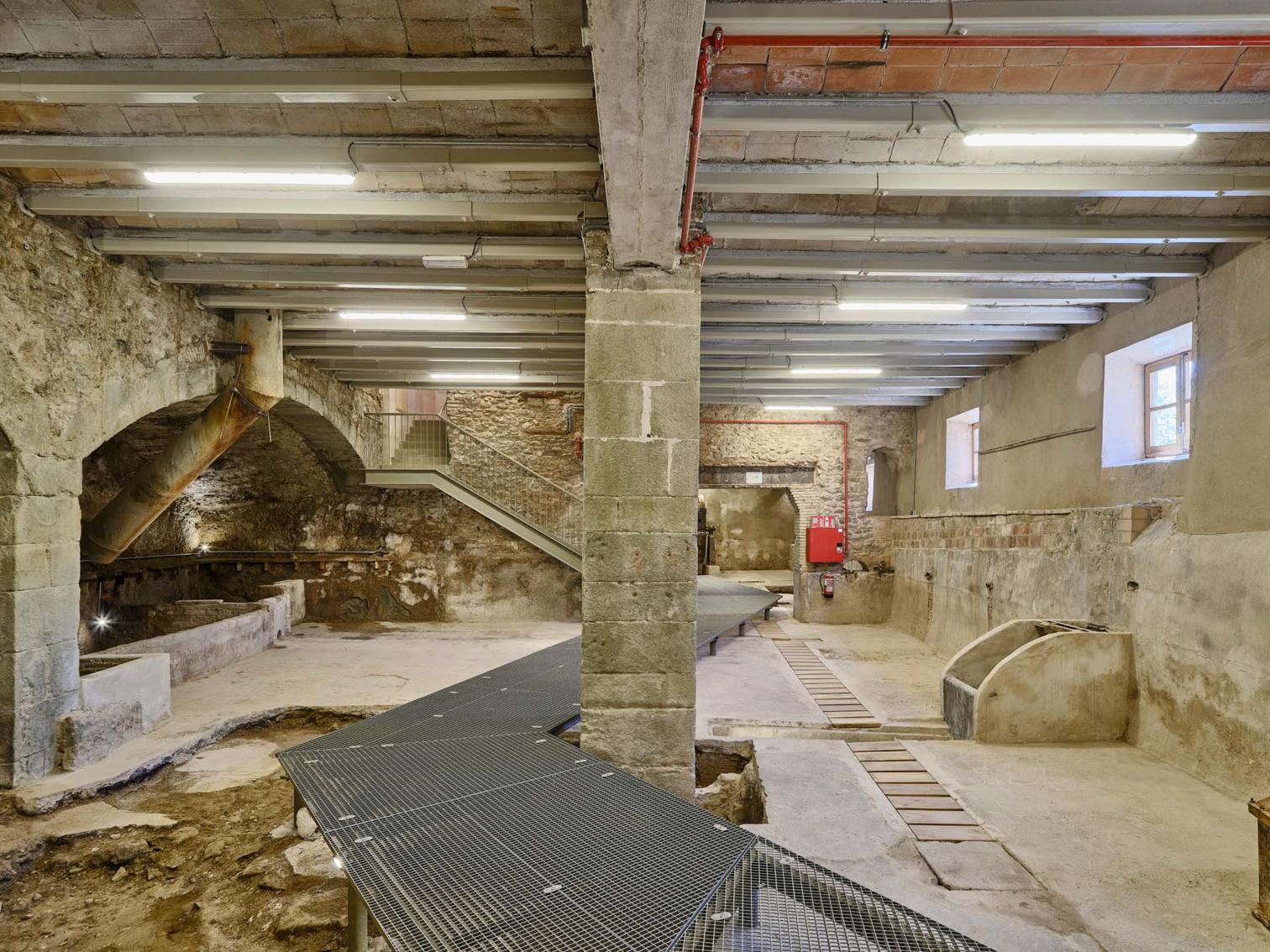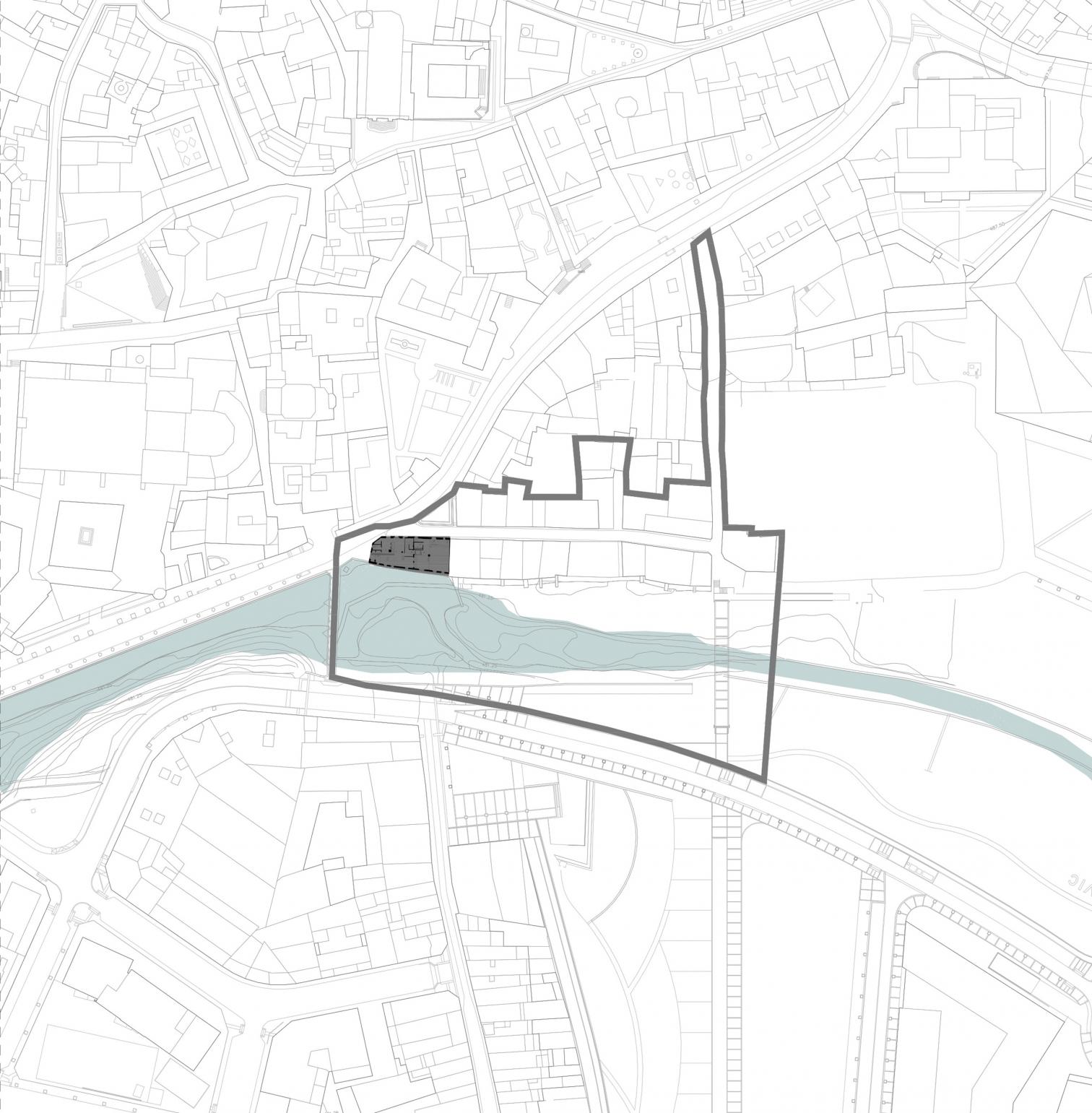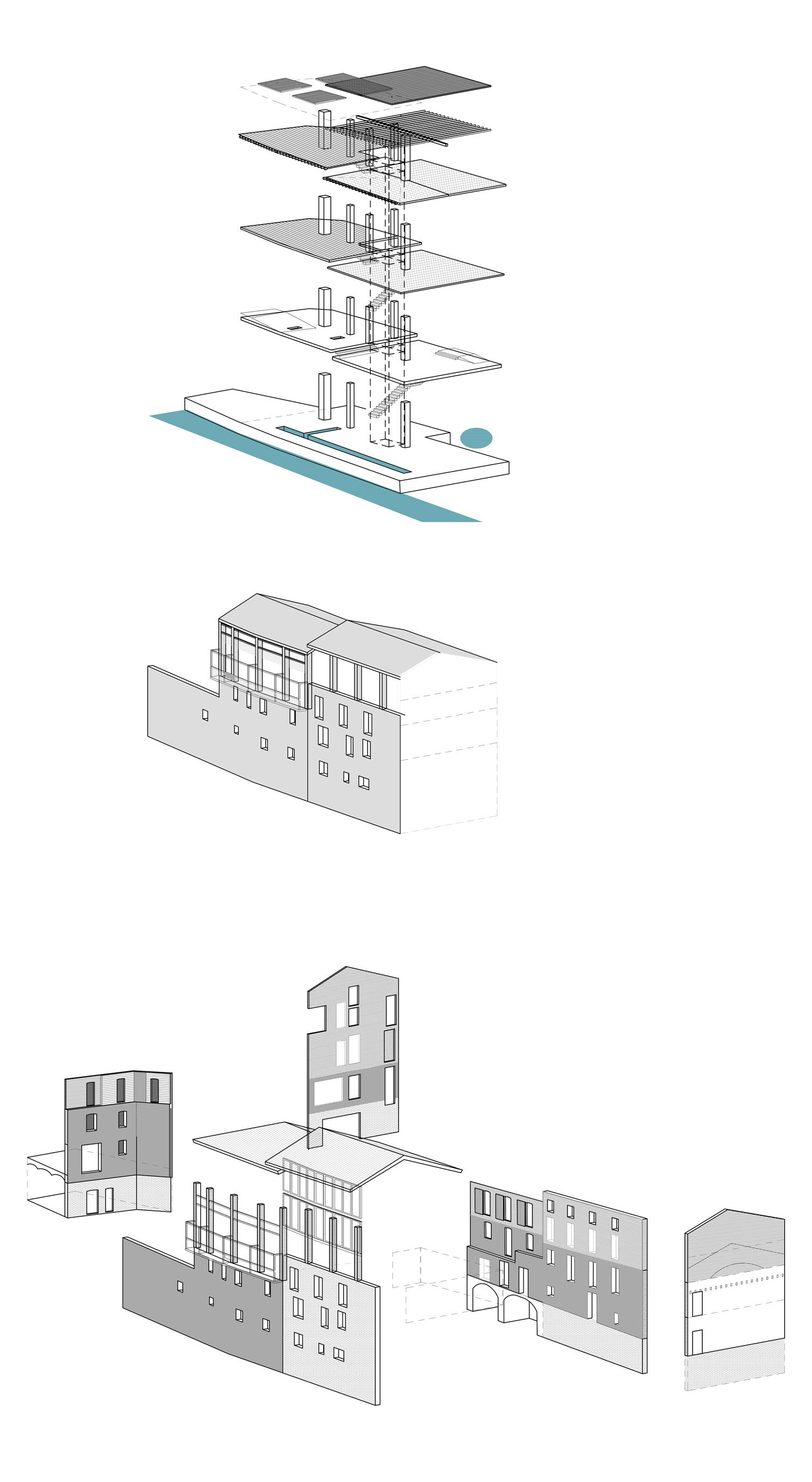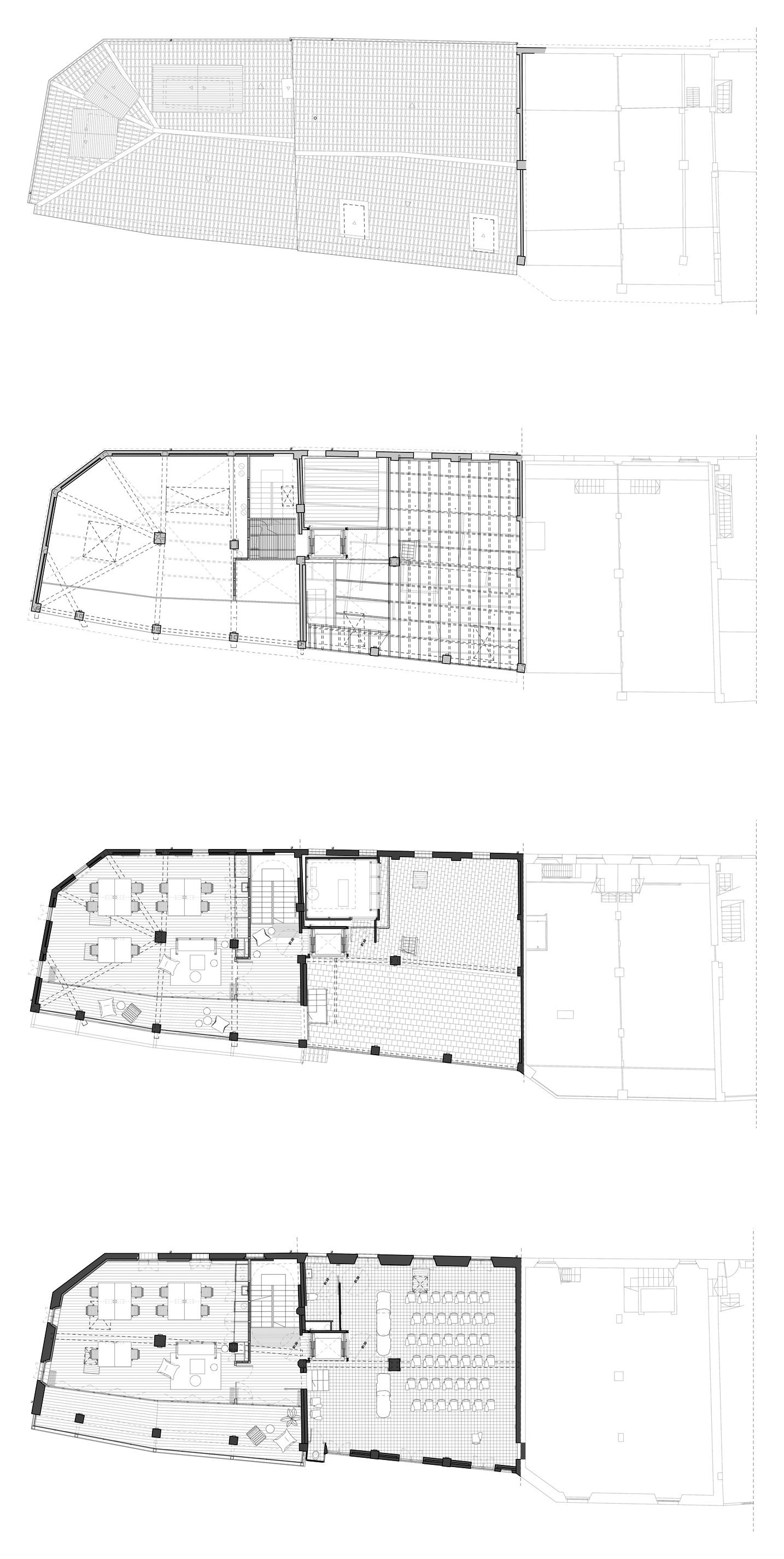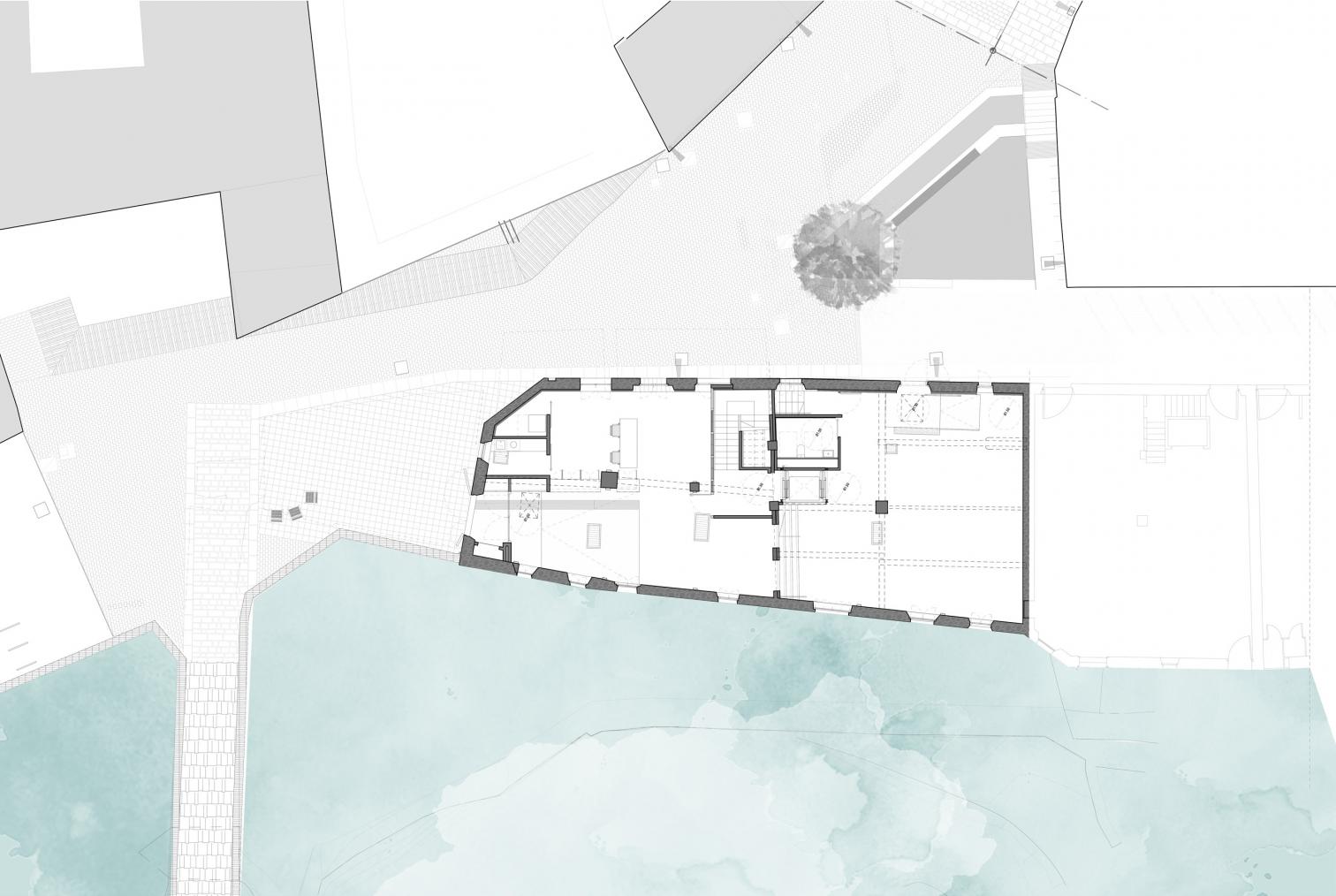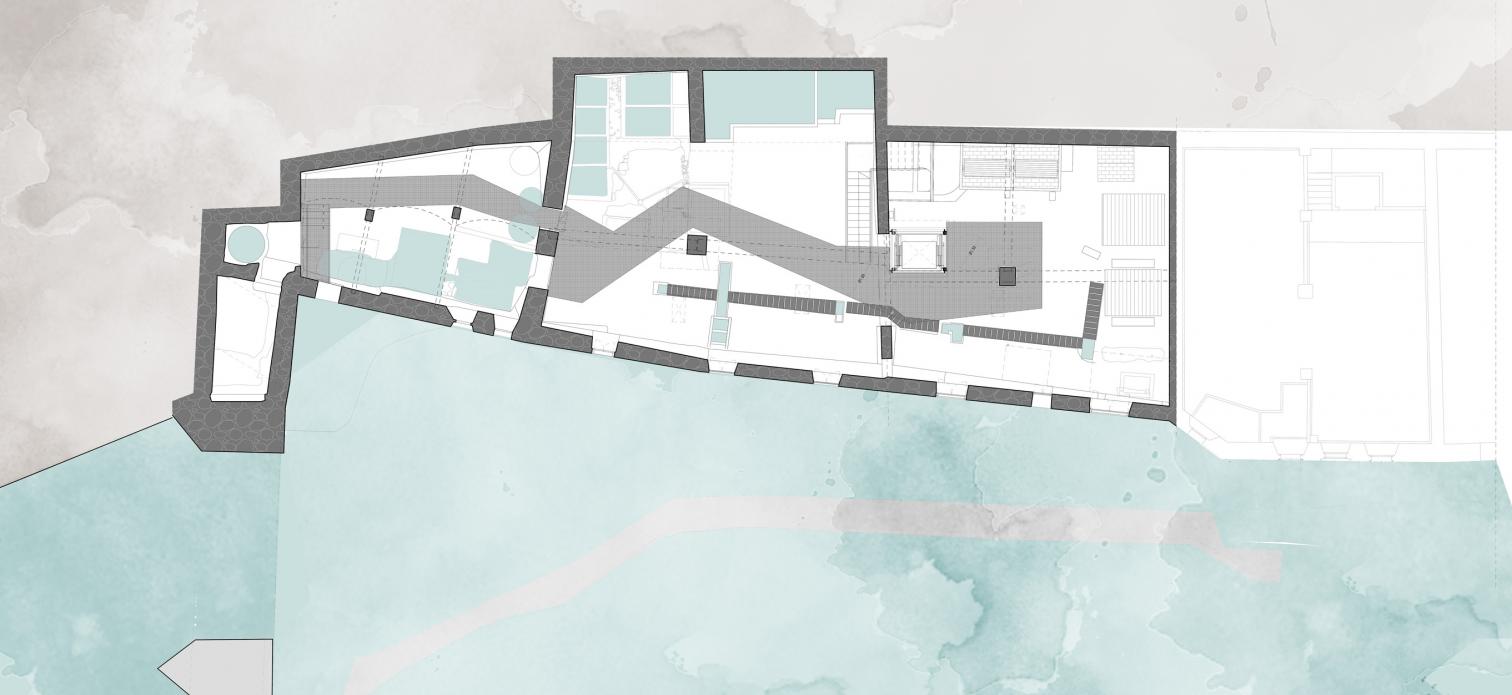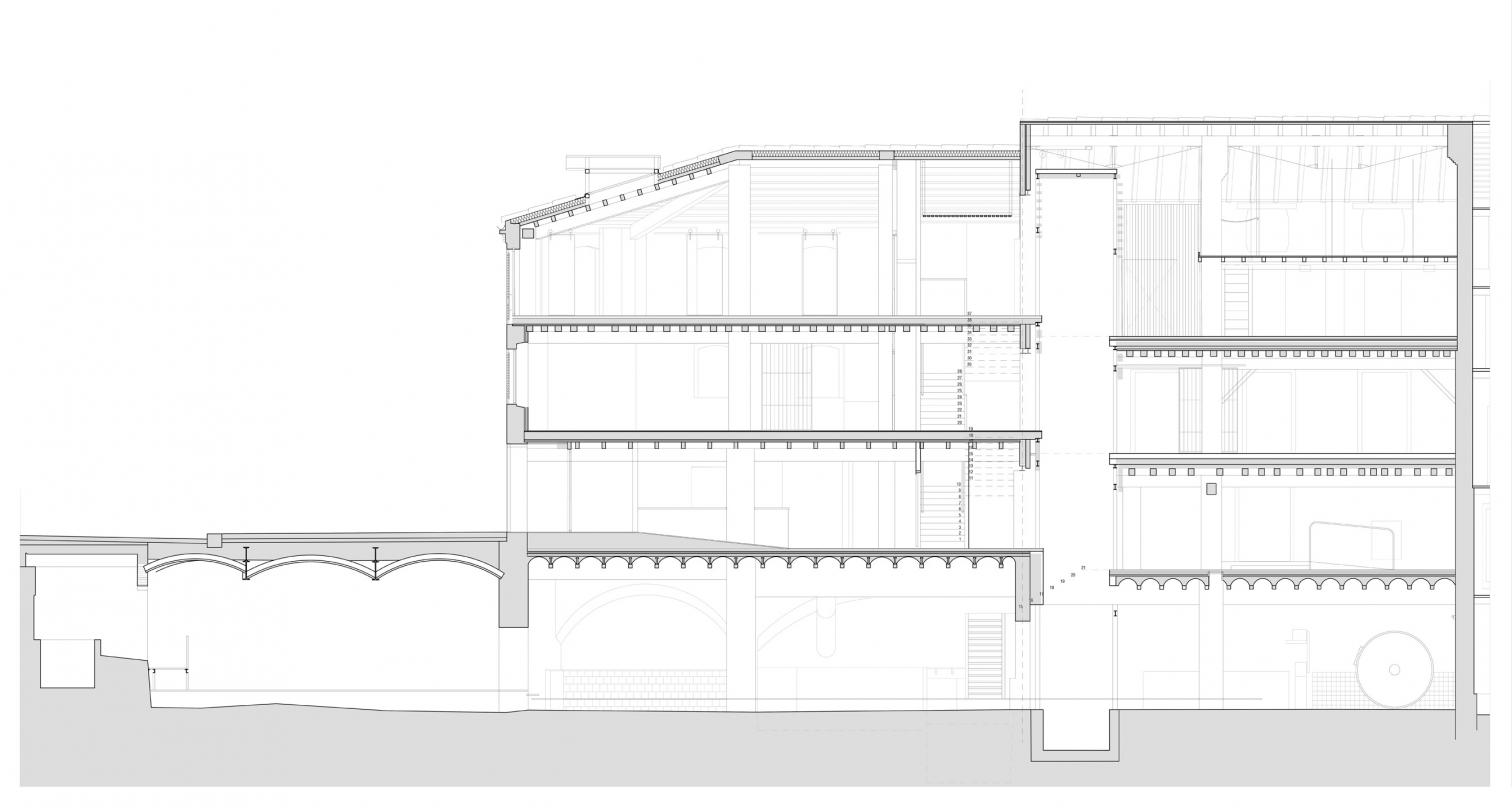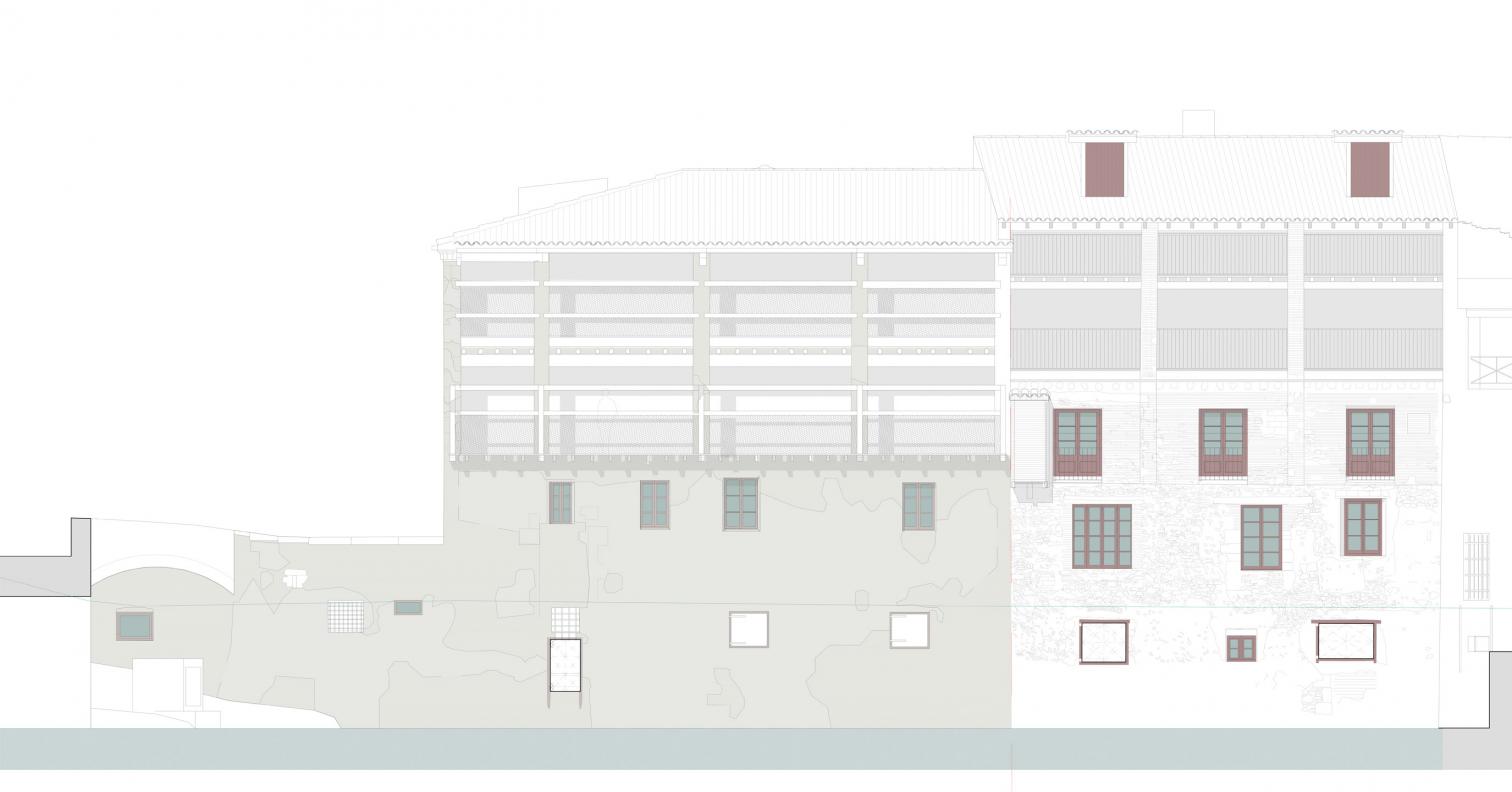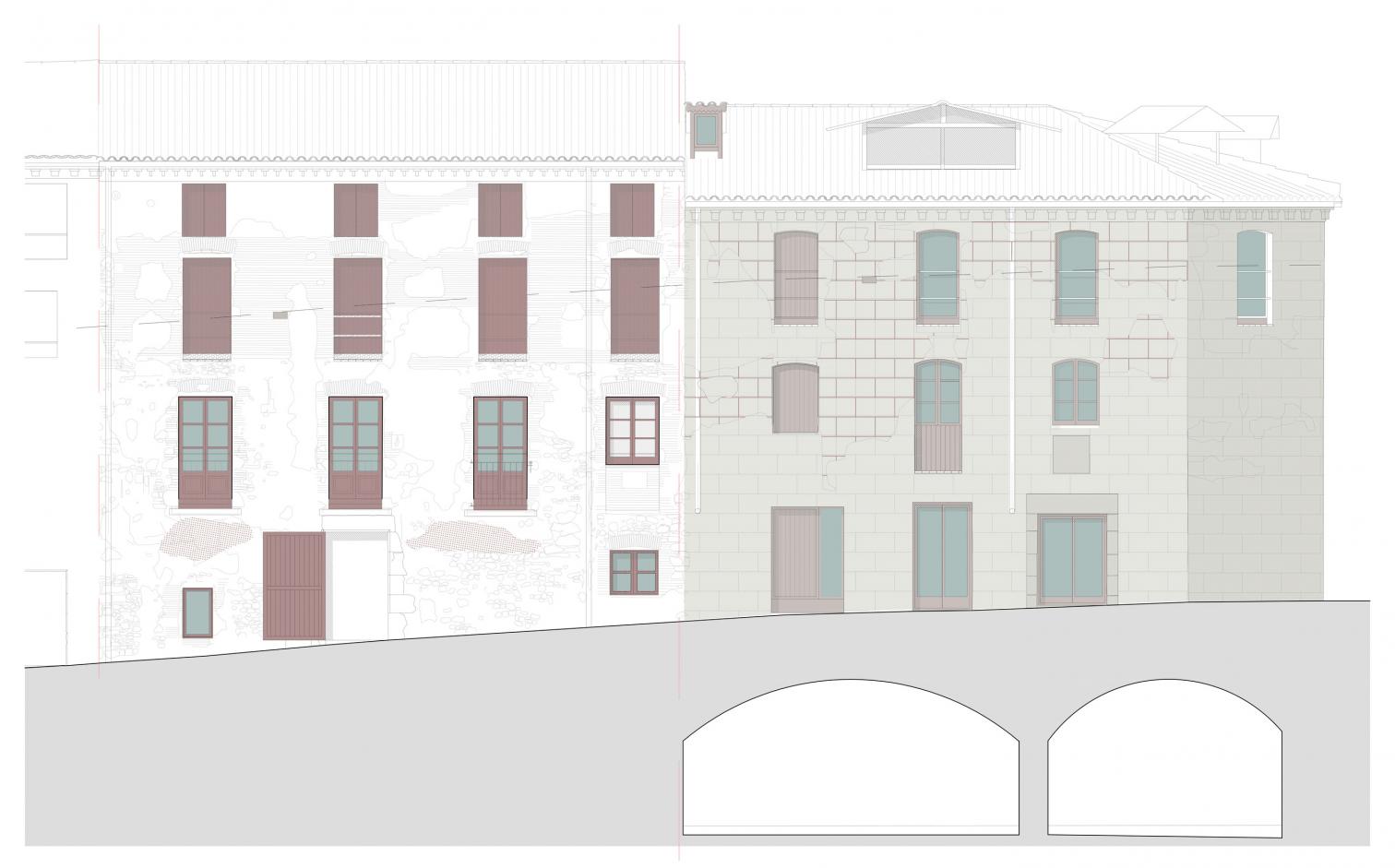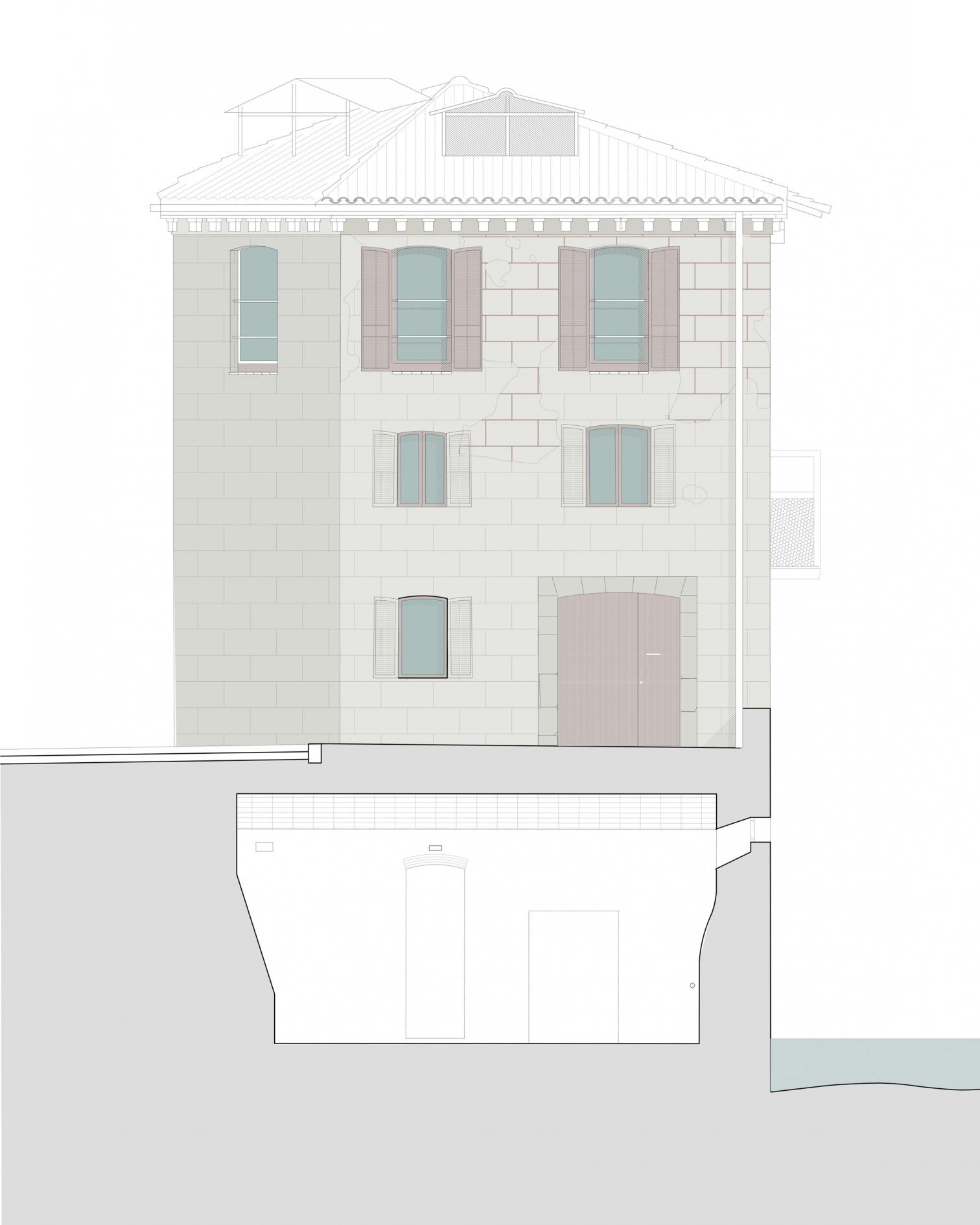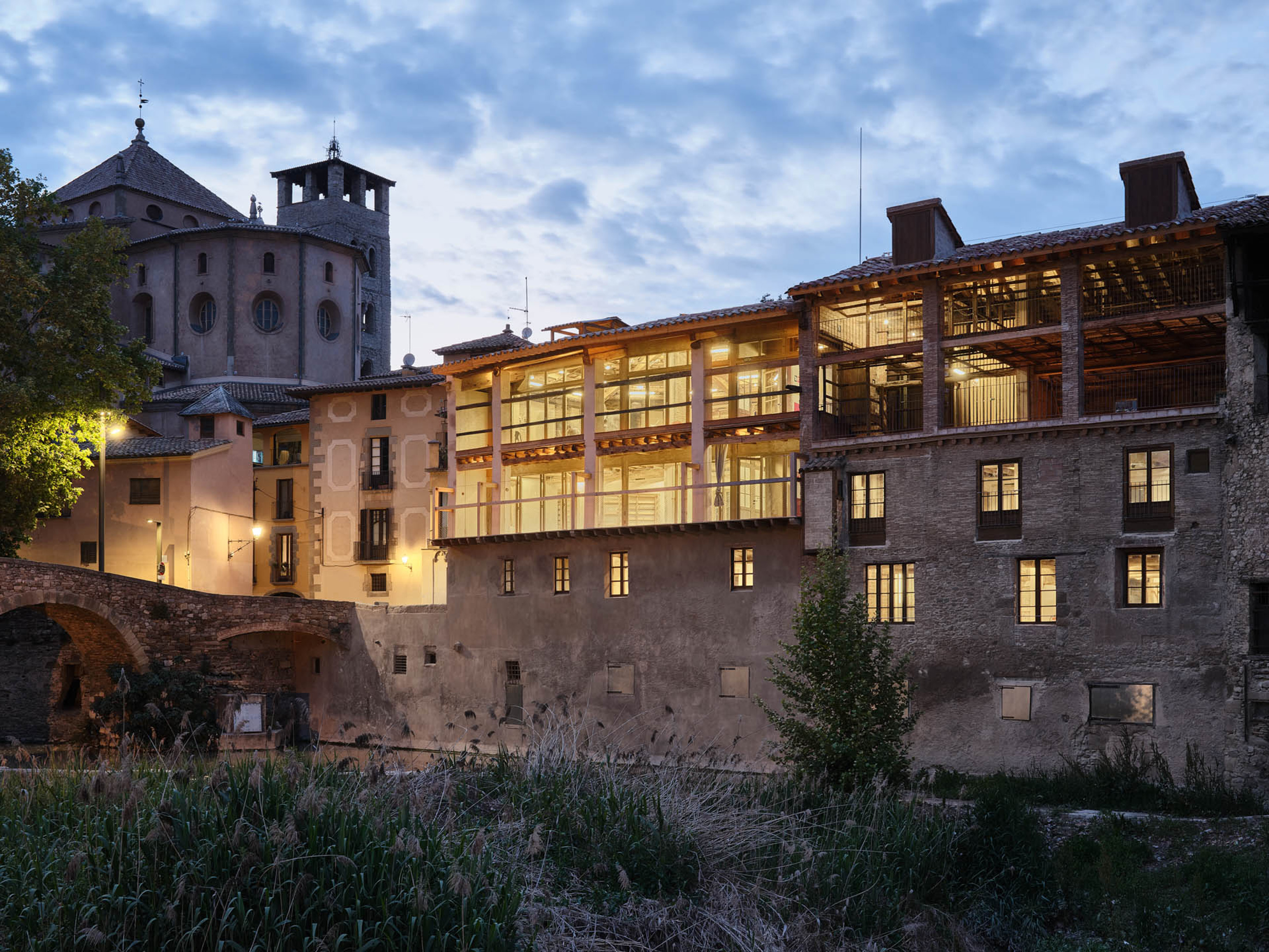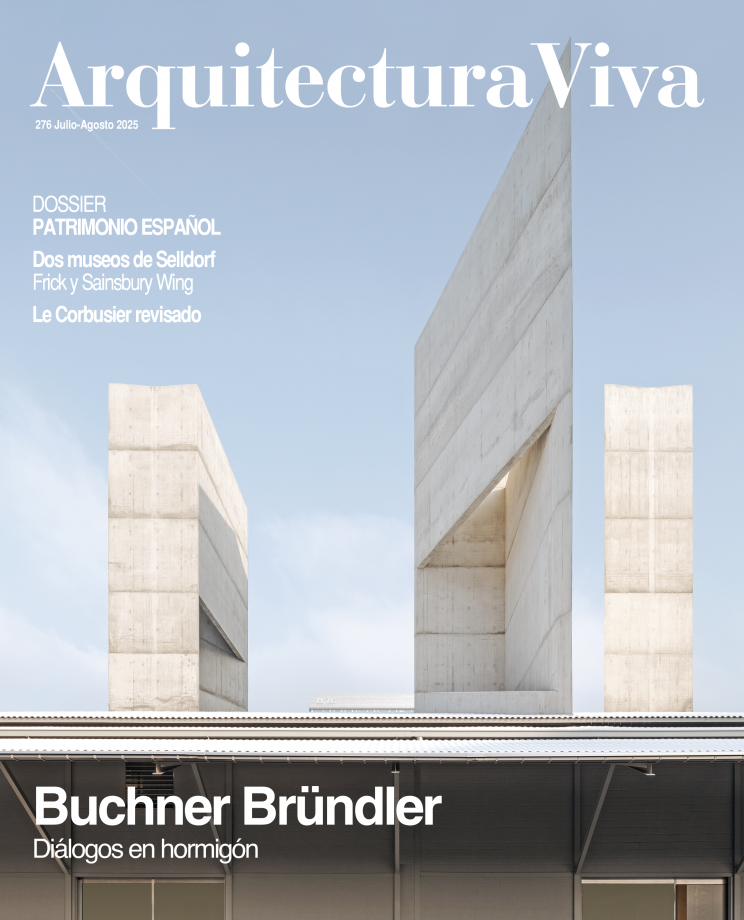Refurbishment in the Adoberies district of Vic
Elisenda Foradada Mireia Noguera Miquel Autet- Type Refurbishment
- Date 2024
- City Vic (Barcelona)
- Country Spain
- Photograph Adrià Goula

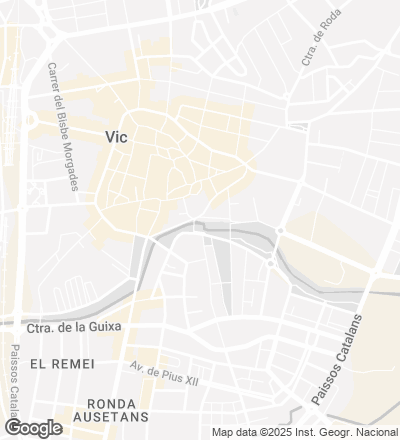
Vic’s Adoberies district, the heart of a tanning industry that for centuries was the driver of this Catalonian city’s economic growth, has had a rebirth thanks to a careful and respectful architectural intervention carried out by the municipal architects Elisenda Foradada, Mireia Noguera, and Miquel Autet of Vic’s City Hall.
The operation involved two remarkable buildings in the district, located next to the Mèder River. Declared a Zone of Ethnological Interest (ZIE) by the Catalonian Regional Government, the area was saved from demolition at the end of the 20th century owing to a citizen mobilization aimed at curbing urban plans that threatened to erase the historic complex.
The main objective of the revamp was to preserve and upgrade the original essence of these spaces. Elements of the tanning process were preserved and restored, including dye stains on walls, old nailed used in the drying of hides, trap doors connecting floors, and other material evidence of the area’s industrial past.
During the works there were important archaeological finds, such as of medieval pits on the ground floor, remains of a house with original polychromes, and an arch that was missing from a Romanesque bridge. These discoveries further reinforce the heritage value of the complex.
The intervention has made it possible to read the different layers of the building’s architectural transformation over time. Original tectonics were maintained through artisanal techniques, traditional materials, and case-by-case solutions, in a successful combination of respect for history and sensitivity for contemporary needs.
The new facility is to house an interpretation center on the tanning trade, municipal premises and offices, and more. The opening of these old tanneries to the public does not only honor the memory of an industry that was essential to Vic; it also gives them a future through a cultural and social use sure to strengthen their historical identity.
